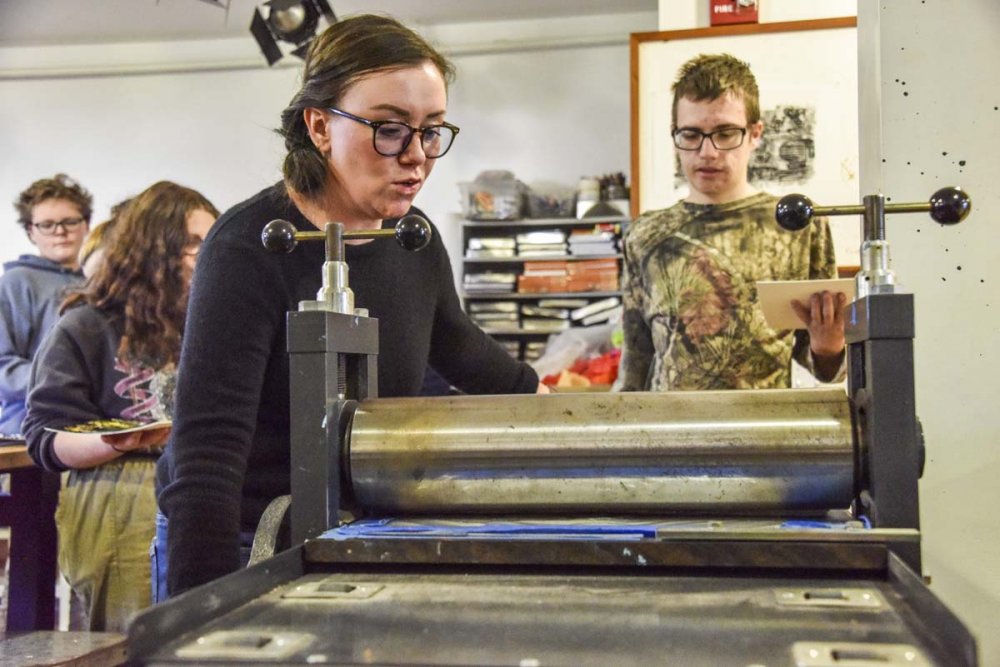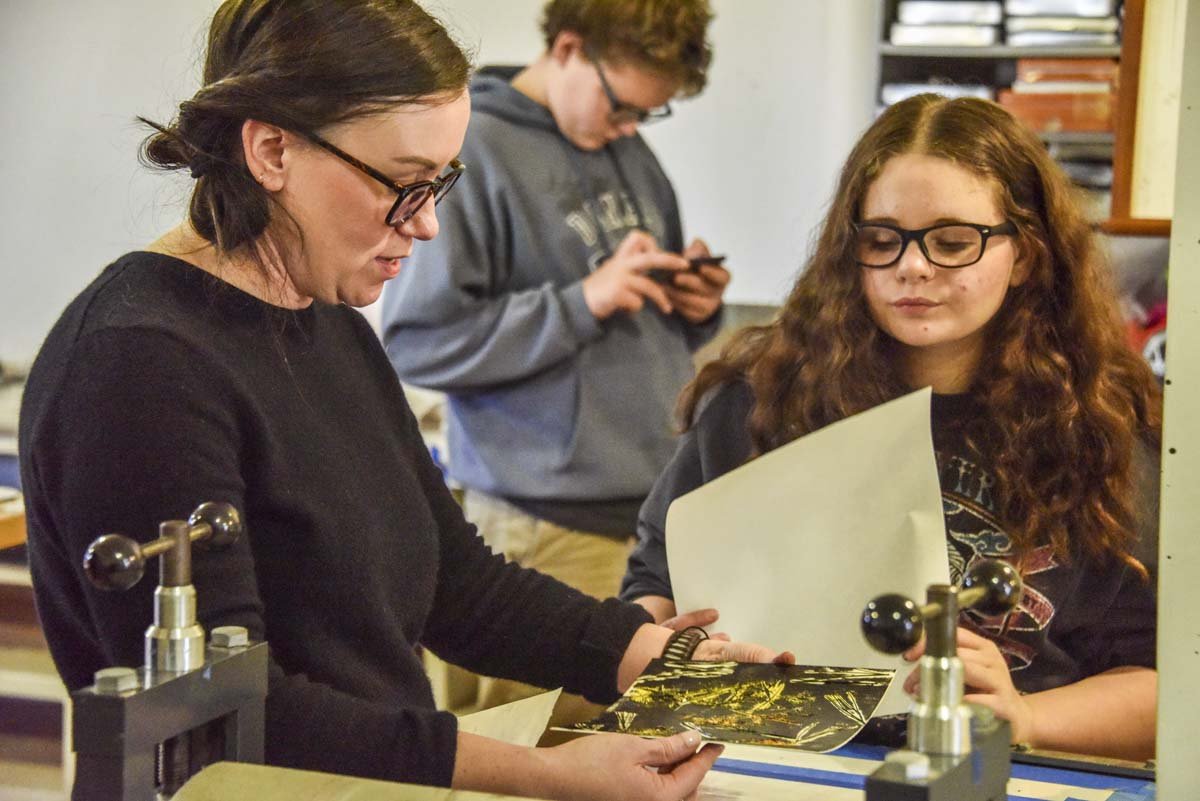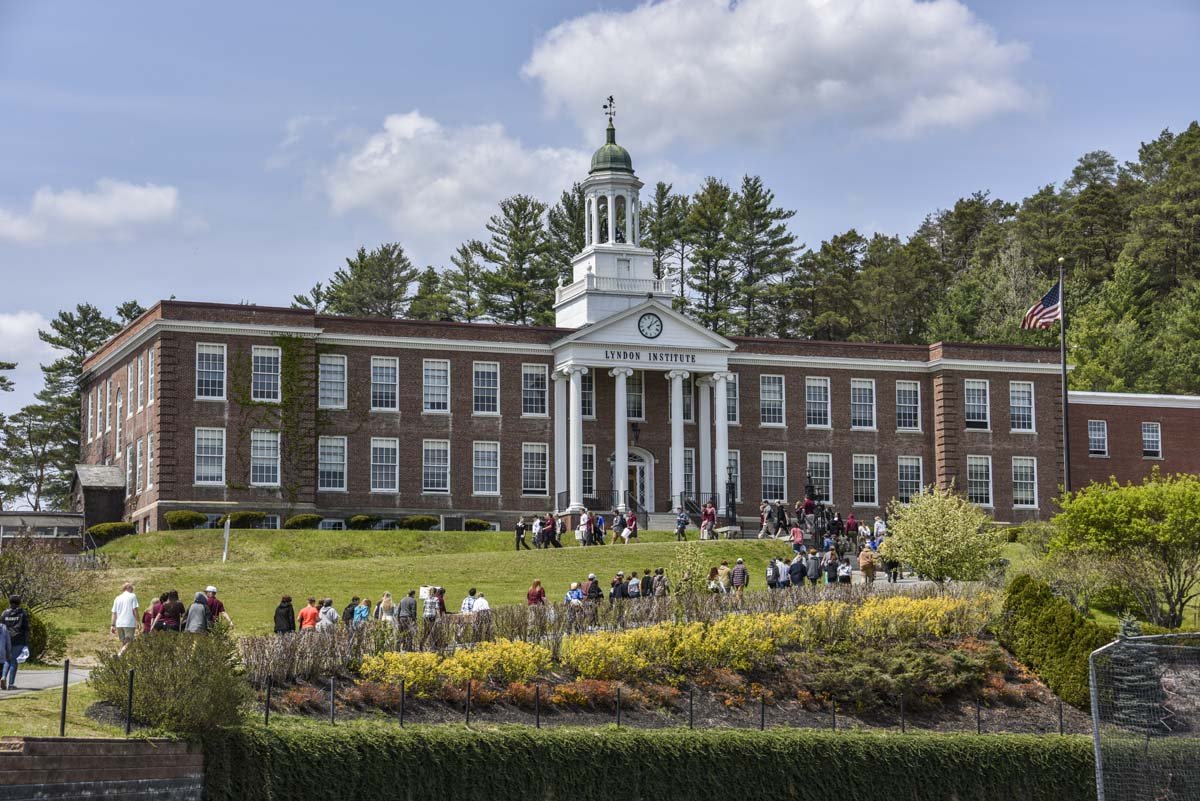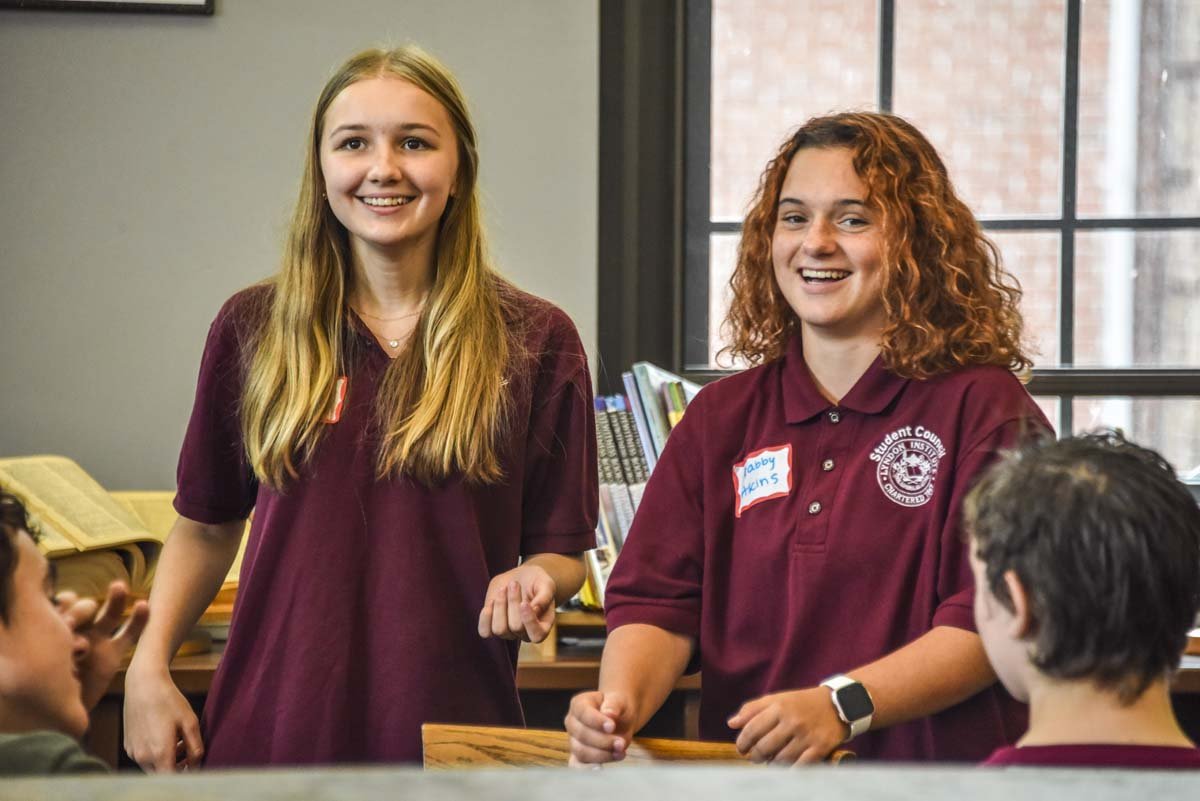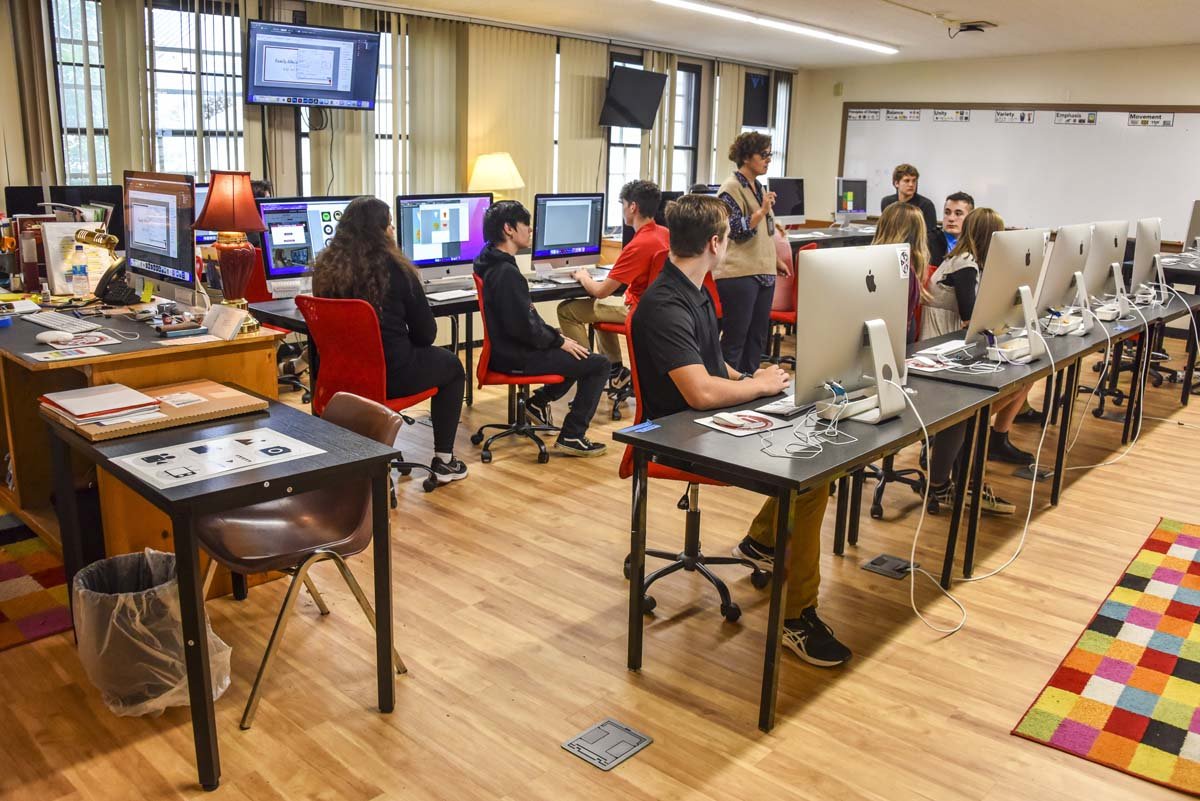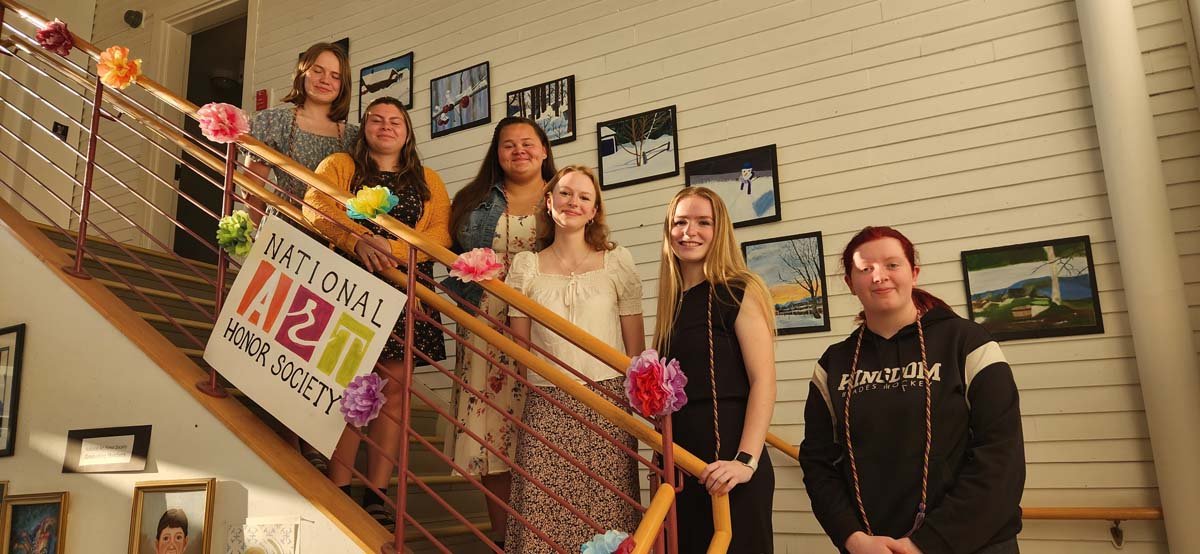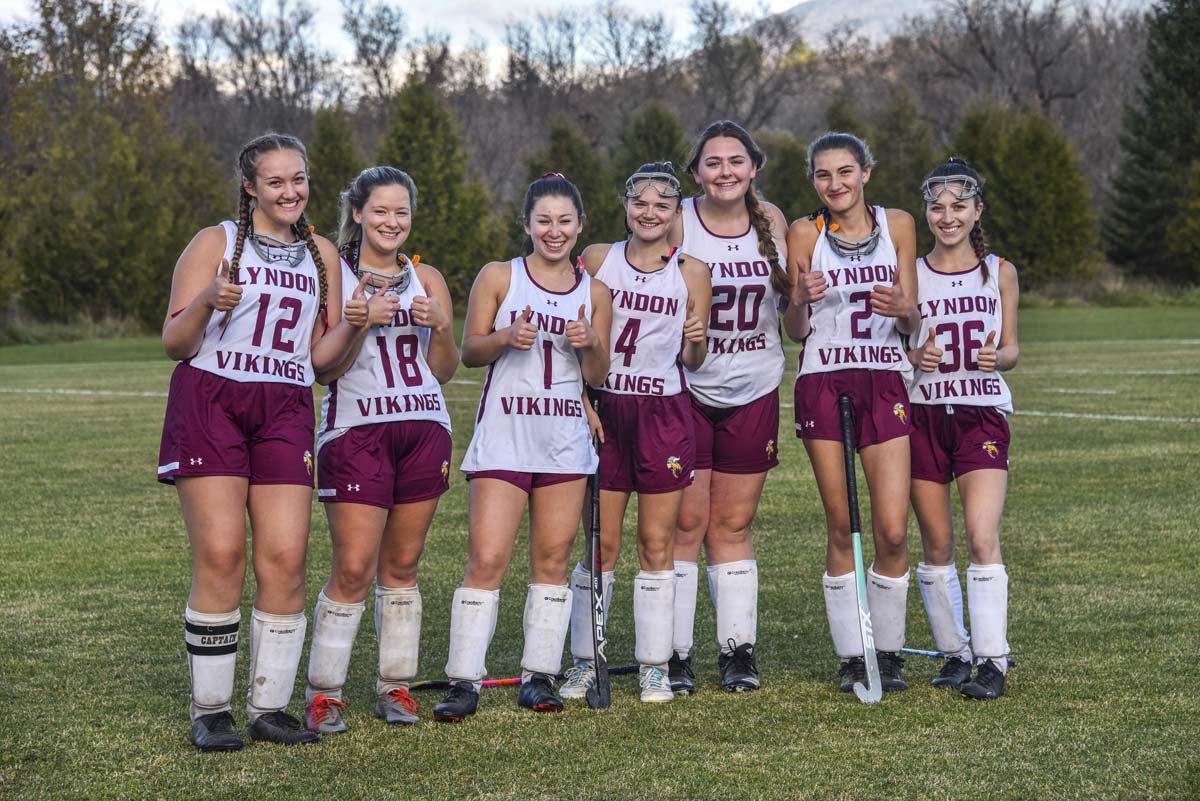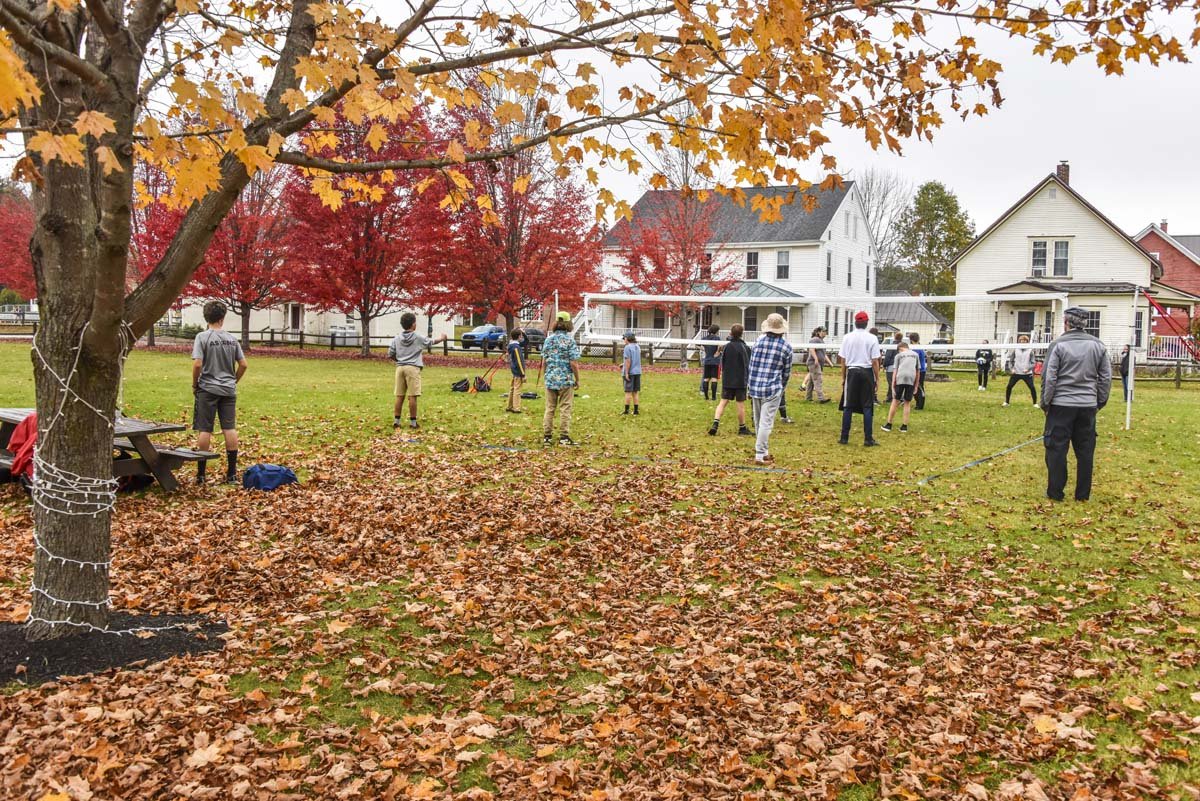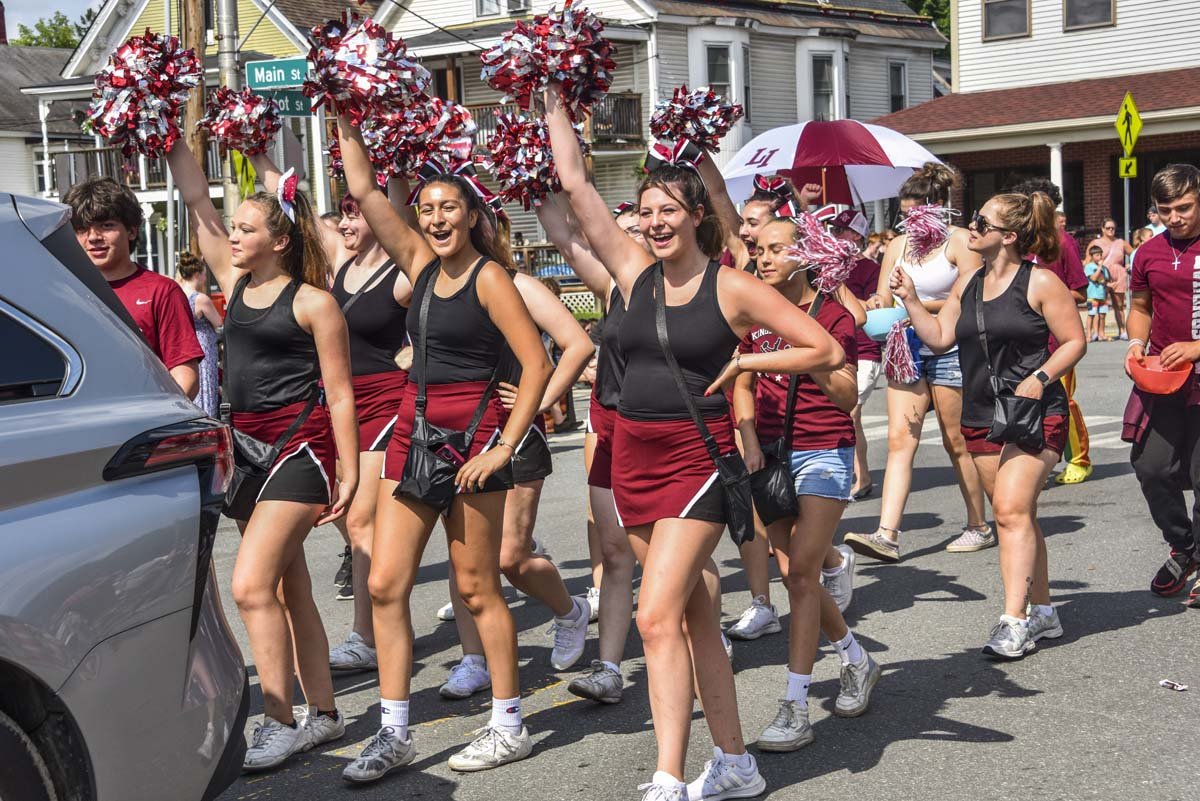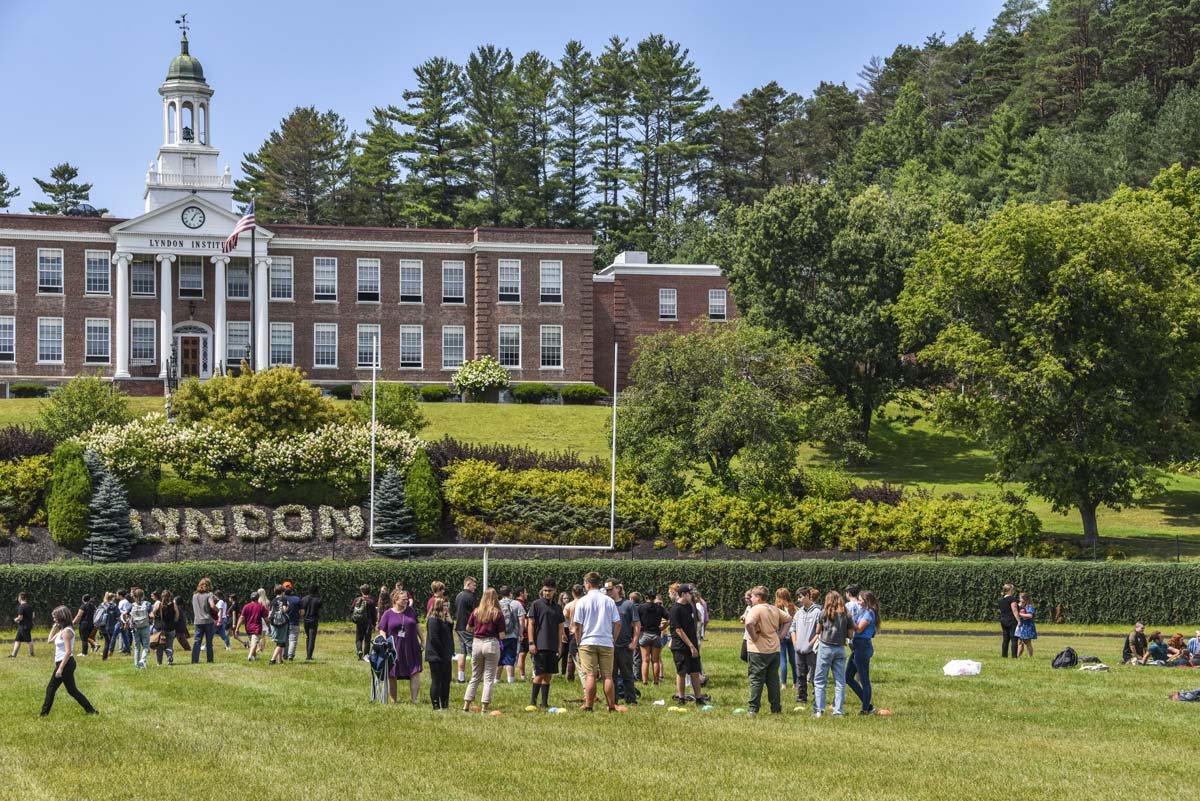- Our School
- Admissions
-
Academics
- Divisions and Faculty
- Commencement 2024
- January Term
- International Program (ESOL)
- College and Career Counseling
- Upward Bound
- Library/Monahan Academic Commons
- Career/Technical Education
- Lyndon Learning Collaborative
- Flexible Lyndon Institute Pathways (FLIP)
- Specialized Instruction
- Adult Continuing Education
- Lyndon Institute Course Catalog
- Student Services
- Arts
- Athletics
- Campus Life
- Support LI
- Alumni
« Back
Adventures in Collagraphy
December 1st, 2023
Guest Artist Shows LI Students a New Way to Print
By David Stahler Jr.
The first thing you notice walking into the studio in Lyndon Institute’s Norris Arts Center is the odor of ink, a scent a student will later say “smells like tea.” Visiting artist Jack Thomas is busy going around to various stations in the room. At each station she uses a putty knife to pull a blob of thick, black ink from a can onto a large plexiglass plate, then spread it out, moving it back and forth to thinness, heating and thereby softening the ink while art teacher Elly Barksdale takes out a stack of stiff pieces of matboard decorated with what seem like random assortments of materials.
It’s day two of Thomas’s visit and both teachers are preparing for the imminent arrival of the fifteen students who comprise Barksdale’s Printmaking class. While the pair finish their preparations, they get me up to speed.
“These are collagraph matrices,” Barkdale explains, giving me a close up of the stiff pages. The various designs—a mix of organic, inorganic, and recycled materials—are covered with a hardened and transparent coating of Mod Podge, a decoupage glue. Pine needles, coffee grounds, beads made from hot glue, string, pieces of plastic drawer liners—you name it, you’ll find it arranged in interesting patterns on the pages. Some are crafted into landscapes, others seemingly random designs, but all have texture.
“Day one was all about creating these matrices,” Thomas says. “Today is the fun part!”
As students begin to arrive, Thomas begins preparing the 18” Conrad Machine etching press that she is quite taken with. Thomas knows her presses.
A long-time art professor who has taught at colleges and universities from Georgia and North Carolina to Ireland and Greece, Thomas (jackthomas.art) is a master of multiple mediums but works most closely with print-making and textiles. In addition to her mostly-commissioned art, she also works as an instructional designer, curriculum developer, and marketer. She recently moved to the Northeast Kingdom.
“‘Colla’ comes from the Greek word meaning ‘glue’,” she says. “It’s also where we get the word ‘collage’. ‘Graph’ is from the Greek ‘to write’. Together, these two words give ‘collagraph’ printing its meaning.”
Aside from the Mod Podge, there is a definite collage-like feel to the students’ work—collages that will soon be coated in ink and ready for the etching press.
Once everyone has arrived, Barksdale and Thomas gather them around for a walk-through of the process.
“This is oil-based ink, so don’t touch it too much or get it on your clothes,” Thomas warns them right away as she continues to work the substance with her putty knife. “The ink likes to be warm, so I’m creating friction here to soften it up. The rad thing about oil-based ink is it doesn’t dry quickly, just like oil paint, which gives the colors a chance to set.”
With the ink in good shape, she moves to the next step.
“Watch closely, everyone! I’m going to show you how it’s done, then you’ll all have a chance to use this awesome press your school owns.”
The students watch as Thomas takes a “brayer”—a small, handled roller—and applies ink to the roller’s surface. She dabs the brayer down into the ink several times, then rolls it against the plexiglass panel in a series of long strokes.
Thomas explains the technique as she demonstrates. “It’s important not to gouge the ink when you remove it from the can. Treat it like butter. When you roll, dip down, then pick up straight. Don’t roll back and forth—any uninked spots on the roller won’t get coated. Just land the roller and move it one direction, then repeat. Think of an airplane, taking off and landing!”
With the brayer sufficiently inked, she moves on to the next part of the process, using an absent student’s matrix.
“So here’s where your matrix will get coated in ink. It’s going to look a little different now,” she warns. “Don’t worry about the black color. It’s what will make the print. Be sure to cover every part. Your matrix will have different heights based on the materials, so you really need to get in there for the print to come out well.”
The gathered students study her technique. A few ask questions. Everyone is eager for the final stage.
Finally, the press. “Okay, we’re going to put together our press sandwich!” she says, carefully taking her matrix over.
The crowd shifts from the table to the press. She lays the matrix face up onto a plastic-lined jig she’s prepared, a template that centers the matrix and creates a clean one inch border for the print. Layers of paper and felt pads are carefully laid on top, one at a time. She points out that one hand is always holding onto the matrix in place until all the layers have been added and ends with a stern warning to make sure the hand is pulled away before printing.
“NEVER leave your hand near a working press. I’ve watched fingers pop like hotdogs in a microwave. Not a pretty sight!”
Her analogy draws nervous laughs from the students, a sign the impression has been made.
Everything is ready. She invites a student over to crank the press’s handle, pulling the covered inky matrix under the drum until it comes out on the other side. The crowd waits with bated breath until the last layer is removed and the paper is lifted from the matrix, revealing a perfect black and white print.
“Okay! Now find your station, bust out your matrices, and let's start inking!”
For the rest of the 70-minute block, Thomas and Barksdale circulate the room, helping students navigate the various stages of inking and pressing their matrices. The two compliment each other in their styles—Thomas bustles with energy, cracking jokes with the students, reassuring them if they make a mistake, while Barksdale’s gentle calm soothes and reassures in a different way, redirecting them if they lose focus or express anxiety about their work.
There is just enough time to get everyone’s prints made—along with a chance for a few to repress prints that didn’t quite turn out as planned the first time through—and start getting brayers and plexiglass panels cleaned up. By the time students leave for their last class of the day, the rack is filled with drying prints that cast striking reflections of the textured matrices created the previous class.
As Thomas and Barksdale finish cleaning up, I ask them how things went.
“I thought it went great!” Thomas says. “Everyone seemed happy with their work.”
I ask Thomas—a veteran of college art instruction—how she feels about working with high school students.
“I love it! They’re not calcified. They’re fresh enough, malleable. Unlike a lot of college students I’ve worked with, they’re not afraid to make mistakes, not riddled with perfectionism.”
Barksdale—a Class of 2000 graduate of Lyndon Institute who went on to study art at Smith College and an accomplished painter whose work has appeared in The Fried Family Gallery at Catamount Arts in St. Johnsbury, the Satellite Gallery in Lyndonville, the Quimby Galley at Vermont State, and North Main Gallery in Salem, New York—is especially appreciative of Thomas’s visits. A former LI dorm parent, she is now in her first year teaching art at her alma mater.
“Jack has been great to work with,” Barksdale says. “I like seeing someone else’s approach to a project, experiencing another tone and energy. When you’re in the midst of teaching, you can be a little too much up in your own head. With a visiting artist, there’s a chance to be more relaxed. I get to be a student again, which is kind of fun!”
Thomas will be returning to LI’s campus in a few weeks to teach a J Term class called “YOUtopia: DIY Zine Manifestos For a Better World.”
Posted in the category Front Page.

